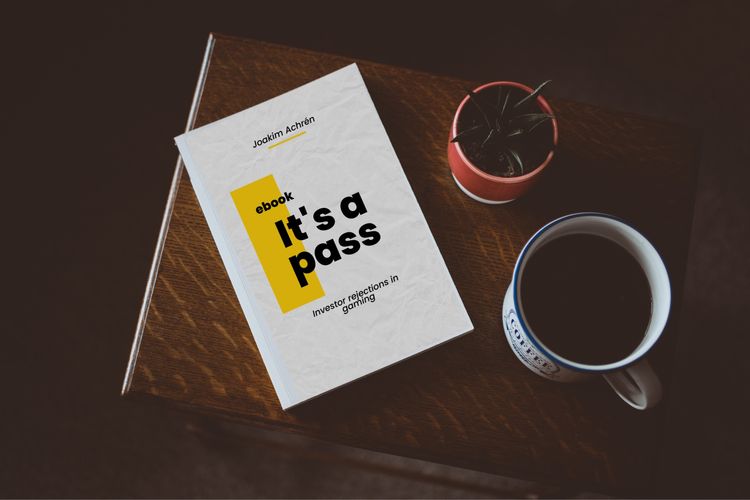Priced Round for Gaming Startups


I’ve previously talked about convertible notes, which are a form of investment, where the investor loans money to the startup, in exchange for terms that allow the investor to convert their loan into equity in the company.
The reason why companies often go for the convertible notes first in their early stages is because
- The valuation of the company is still quick tricky to pinpoint and the mechanisms of the convertible note allow for many scenarios to play out which have favorable outcomes for both founders and the investors
- There’s less paperwork to be done, as the convertible is just one document which doesn’t need much work from lawyers if any. This is especially important for the angel investors as their investment amounts are often small and all the legal fees of a priced round could add up quickly to a five figure sum.
Eventually, the company will want to do a priced round, where the actual investment is converted into shares, also known as equity, in the company. The priced round usually happens when institutional investors, especially VCs (venture capitalists) get involved.
The priced round will consist of three distinct documents. These are the term sheet, the new shareholders’ agreement and the investment agreement. Will now take a look at each of these documents separately.
To review templates of these documents, the Series Seed templates available when you go to www.seriesseed.com
Term sheet
A term sheet is a non-binding agreement that shows the basic terms and conditions of an investment, which in this case would be a priced round. The term sheet outlines the deal terms, and it serves as a basis for more detailed, legally binding documents.
Term sheets for seed rounds, like the Series Seed templates, are lighter and shorter than for series A or beyond. The less at stake, the less complex it should be, as no one wants to unnecessarily bring up the legal fees.
In a seed round, the investor will typically be the one providing the term sheet. This may change, especially when there are multiple investors in later and larger rounds. The investor who issues the term sheet will most often become the lead investor of the round.
Why it matters for an investor to be the one who issues the term sheet that finally gets signed by the founder? With the term sheet signed, the lead has secured their investment into the company, where as other investors, who follow in on the deal, might have uncertainty over their allocation in the funding round. The founders are often at an advantage of picking who they want onboard for the left over allocation, when a lead isn’t taking the entire round.
Common items in a term sheet include:
Securities to Issue. The party issuing the shares, the startup in this case.
Aggregate Proceeds. The investment sum. Take note of currency if you are dealing with euros, pounds, or dollars? Make sure that what was discussed earlier regarding currencies has stayed the same in the term sheet.
Subscription Price per Share. This item states the valuation that the investor is willing to do the deal at. The valuation is mentioned as pre-money, meaning the value of the company before the money is invested. I.e the company has a pre-money valuation of $1 million, and it raises $200k, then the post-money valuation will be $1.2 million. But in the case that the company decides that they want to take an additional $50k, the post-money will be a moving target and that’s why it’s not good to write down the post-money on any signed documents.
Liquidation Preference. If an exit happens, the investors will get their share of the cash out first. This is quite common in investments, and I’ve personally never seen this get removed from priced rounds done by VCs.
Voting Rights. This determines how many votes do the investors get when there are shareholders meetings.
Participation Right. The investor wants to secure future rights to participate in following rounds at a pro-rata rate, which basically allows them to invest enough to secure their existing ownership position in percentages.
Board of Directors. Investors who invest in a priced round and are the lead investors, quite often want to have a board seat in the company. One seat is the common number, but I have seen two seats issued to the lead investor as well.
Expenses. Who will pay legal expenses. This is often the company who pays for the company’s and the lead investor’s legal fees. The sum needs to be defined, so that much additional cost won’t come to the startup.
Key Holder Matters. This item usually creates a new share vesting scheme for the founders of the company, where they need to re-vest all of their stock for the next four years, with a cliff of one year. This is quite common to happen for early-stage seed rounds, but if the company has been around for longer than five years, there is definitely room for negotiation here.
Exclusivity. Once the term sheet is signed, the founders will not have the right to seek other term sheets, for as long as 30 days. During this time, the lead investor and founders should enter into negotiations and conclude the negotiations with signed SHA and investment agreement.
A term sheet is usually a few pages long. Simplicity is often preferred by the founders, but it pays to have clarity and make sure all bases are covered.
When a founder is reviewing a term sheet proposed by a potential investors, they should specifically look out for:
- Out of the ordinary debt financing and convertible note terms that could bankrupt you
- Asking for too large of a controlling stake, which may suggest you’ll be replaced
- Terms that can limit further fundraising
- Investors that simply want a short and hot exit, and don’t have realistic expectations of timelines
Investors may aim to tire a founder who’s eager to wrap things up. If you see this is happening to you, hang in, and be patient. Every single provision included on documents may not make sense today, but one of them may be triggered in the long run and put you, your co-founders, and other employees in a bad space.
Just as founders don’t want difficult or greedy investors on board, investors don’t want founders that only want to take the money and run. The term sheet should facilitate a win-win for both sides.
The rule of thumb is that you will be receiving a dilution of around 20% per round of financing, with a maximum of 25%. You do not want to go over that amount. The life of a start-up is long. Even if you are at a seed-stage and you feel it is ok to give up a good amount of equity, you need to know that equity will not come back to you.
A term sheet itself (without signatures) is not an executed deal, or even a promise of an investment to happen. There is still due diligence to be done. So both sides can walk away, and it doesn’t necessarily impact the reputation of either side.
New shareholders’ agreement
Once the term sheet has been signed by the founders and the lead investor, the investor starts a due diligence process, where they go through all the documents in the company. This way, the investor makes sure that the company is at the stated situation, regarding paperwork, cap table, etc.
After the due diligence project comes to an end, a new shareholders’ agreement is drafted by the investors.
A shareholders’ agreement is a document between the founders, investors, other owners of the company, incl. staff, advisors and the company. In the agreement, the parties set out their agreement on the governance of the company, as well as pre-agreed actions and procedures in certain situations.
Many of the terms in the agreement will be transitioned from the signed term sheet, into the actual Shareholders’ Agreement (SHA). Here I will outline the most important clauses of the agreement.
Board
The composition of the board of directors is usually stated in the SHA. Typically both the founders and the investors have the right to nominate one board member, with the rest of the board members to be nominated jointly. Some investors may also be entitled to appoint a board observer, i.e. a non-voting person participating in the board meetings.
Decision making
“Qualified Majority means the Shareholders holding at least two thirds (2/3) of the Shares held by all Shareholders and including always the Shareholders holding more than fifty percent (50%) of the Series Seed Shares.”
Page 6 of Series Seed SHA Template
A Qualified Majority is a group that can make decisions on things like an exit, IPO, etc. The qualified majority can be e.g. over 50% of the founders’ votes and over 50% of the investors’ votes in the company. Series Seed points out that two-thirds of the shareholders, including the Shareholders that hold over 50% of the Series Seed Shares (the investors from the priced round.)
This is meant to ensure that the decision is in the best interest of both the investors are well as the founders. Obviously, involving all of the shareholders’ in the decision-making is burdensome and should only be applied to insignificant decisions. Typically qualified majority decisions are limited to situations like exiting the company, appointing new CEO, entering into a joint venture, significant investments, and so on. It should be emphasized that under no circumstances actions under the normal course of business should be subject to qualified majority requirements.
Information Rights
The information rights will grant investors access to the company, to have open or partial access to the company.
Common approach is to limit access to monthly reports or updates on the business, with an inclusion of an annual budget plan. I think it’s beneficial for both founders and investors, that the relationship is built on good update habits. Besides having regular board meetings, it’s beneficial to start producing monthly investor updates.
I’ve written extensively about monthly updates here.
Future Financing
If the company raises more funds in the future, the investors in the previous round will have the right to also participate in the new round.
“All Investors shall have a pro-rata right, but not an obligation, to participate in subsequent issuances of any Shares on the same terms and conditions as any other Shareholder or third party investor or financer. In addition, should any Investor choose not to purchase or subscribe to its full pro-rata portion (calculated based on the Investor’s then-current shareholding) in such issuances of any Shares, the other Investors shall have the right to purchase or subscribe to the remaining pro-rata portion of the Shares.”
Page 9 of Series Seed SHA Template
Why this is important to the investors? The investors want to be able to double down on companies that are doing well. They basically put in money into companies that become huge winners.
If the investor owns 5% of the company, after a future round, they would only own 4% with new investors getting 20% from a financing round with a 20% dilution. By participating in the round, and carving 1% of the future dilution for themselves, they can hold a 1% position in the company also in the future.
For investors, ownership percentage often matters more than money invested. If a company is doing well, keeping the ownership percentage as high as possible is a good way to secure a great exit somewhere in the near future, which should at least be closer than investing that money into a company that is just getting started.
Investment agreement
The investment agreement defines requirements for investment, called closing requirements. These include
- the signing of the required agreements (such as the investment agreement and the shareholders’ agreement),
- taking necessary resolutions (e.g. approval of the investment by the existing shareholders of the company and decision on issuing the shares),
- investor subscribing the shares, and
- payment of the investment by the investor.
Here are the most important sections in the Series Seed investment agreement.
- Investment. This clause details the sum of money to be invested by each investor.
- Closing. The investment will happen as all the other documents, including the SHA, have been signed, and once each investor has wired the money to the company.
- Undertaking after Closing. The company needs to file all necessary documents, i.e. Articles of Association to any and all legislative officials.
After signing the investment agreement, the funding round has come to an end, with the investors become owners in the company.
Final words
As you can imagine, the Convertible Note is a much more simple document to use, unless it’s entirely required by the investor(s) to execute a priced round and have a new Shareholders’ Agreement.
Here is the link to the Series Seed templates www.seriesseed.com
Different countries:If you are operating in Finland, you can utilize the Finland versions of Series Seed by going here.





